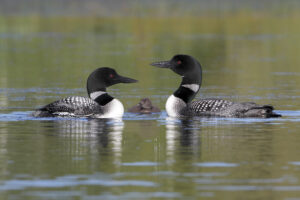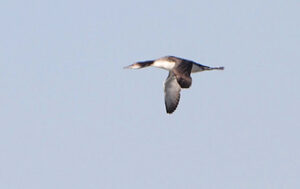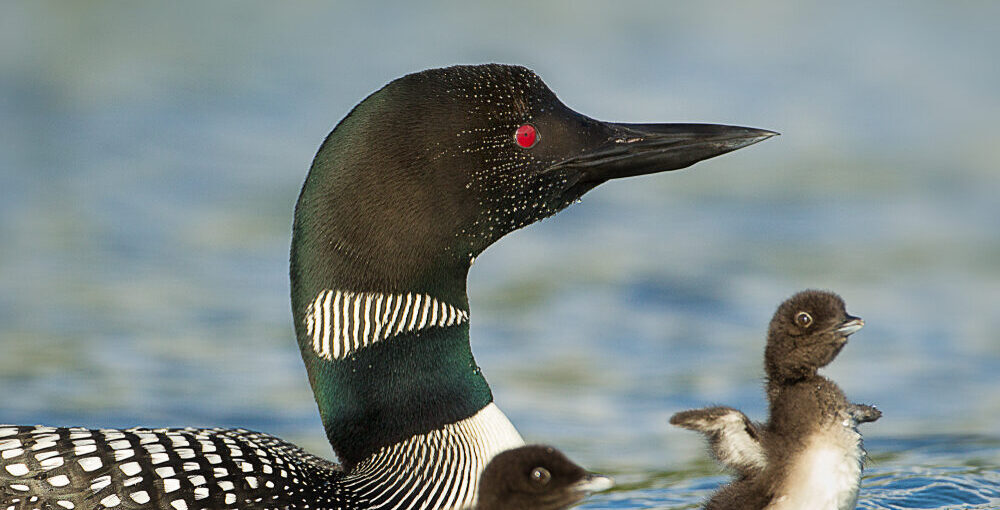Common Loon, Gavia immer
Bill Rowe
A loon is a big swimming bird with a slightly prehistoric look about it. There are five species worldwide, quite different from anything else—ducks, grebes, whatever—and forming a family of their own, Gaviidae. As a group, they live all around the Northern Hemisphere, breeding almost exclusively in the Arctic except for our present species, the Common Loon. This bird, limited mostly to North America, breeds across Alaska and Canada and far enough south to be the state bird of Minnesota, as it nests on lakes large and small throughout the northern half of that state as well as Wisconsin, Michigan, New York, and New England. Loons are in a bit of trouble these days, especially in the Lower 48 and eastern Canada, with adverse impacts from various human activities, such as commercial and residential shoreline development around their breeding lakes; pollution of lake waters with mercury and organic compounds; ingestion of lead, primarily from fishing tackle; acid rain; and so forth. Nonetheless, these birds occupy such a vast range that they are not seen as globally threatened; by recent estimates, there may be a quarter of a million breeding pairs in summer and three-quarters of a million individuals in fall, with the addition of the young birds. These young are raised in nests that the parents build on land near the water (shoreline or islands), or on raised mounds of vegetation, including muskrat houses. In fall, the loons migrate south along the Atlantic and Pacific coasts and across the interior, passing the winter on all the coastal areas of the U.S. and the lakes and reservoirs of our southeastern states, as well as the coastal parts of western Mexico. And some of them, presumably those that breed in Greenland, head east to winter on the coasts of Britain and western Europe, where their English name is, or at least used to be, the Great Northern Diver.
IDENTIFICATION: Common Loons are as large as a medium-sized goose or a cormorant. In late fall, winter, and early spring, they are in nonbreeding plumage, as shown in the banner photo: dark brown above and white on throat, foreneck, and breast, with a curved head/neck profile and a long, stout dagger of a bill. Juvenile birds have more pale barring on the back than adults, but they are otherwise similar. All ages have an irregular “jagged” border along the neck, with indentations of white into the dark areas—which becomes important in separating Common Loon from the rare Red-throated and Pacific Loons. In spring, some migrant loons will be molting into their classy breeding plumage, as shown below, and they may occasionally give their signature calls, a long wail or a short tremolo. See also below for their unique appearance in flight.
ST. LOUIS STATUS: A regular migrant on large rivers and large to mid-size lakes; usually in small numbers, but a good site like Carlyle Lake may get scores at a time. Peak periods are October-November and March-April. Rare in midwinter.
Learn more and listen to the calls of Common Loons here.


Breeding adults with chick
Nonbreeding bird in flight
Photo Credit: Al Smith




